Here's a little evening project I've been doing the past few months, literally at no more than 30mins at a time.
I basically wanted a new 6ch amplifier for centre, rear and side duties comprising of the following:
- does not consume a lot of power
- balanced inputs
- trigger enable
- reliable for time and loadshedding
- cost-effective
My trusty Sunfire Cinema Grand did the part on most of these, except reliability and 12V inputs, plus the itch was there to go DIY.
I am very well familiar with the Pascal amplifiers and they, if correctly used, are capable of astonishing results despite their compact size and having integrated power supplies. Each module is capable of 2x 500WRMS, sustained, so this is basically a 3kW amp. And since each amp has its own PSU, this figure is correct with all channels driven.
Below are the pics of the final product:
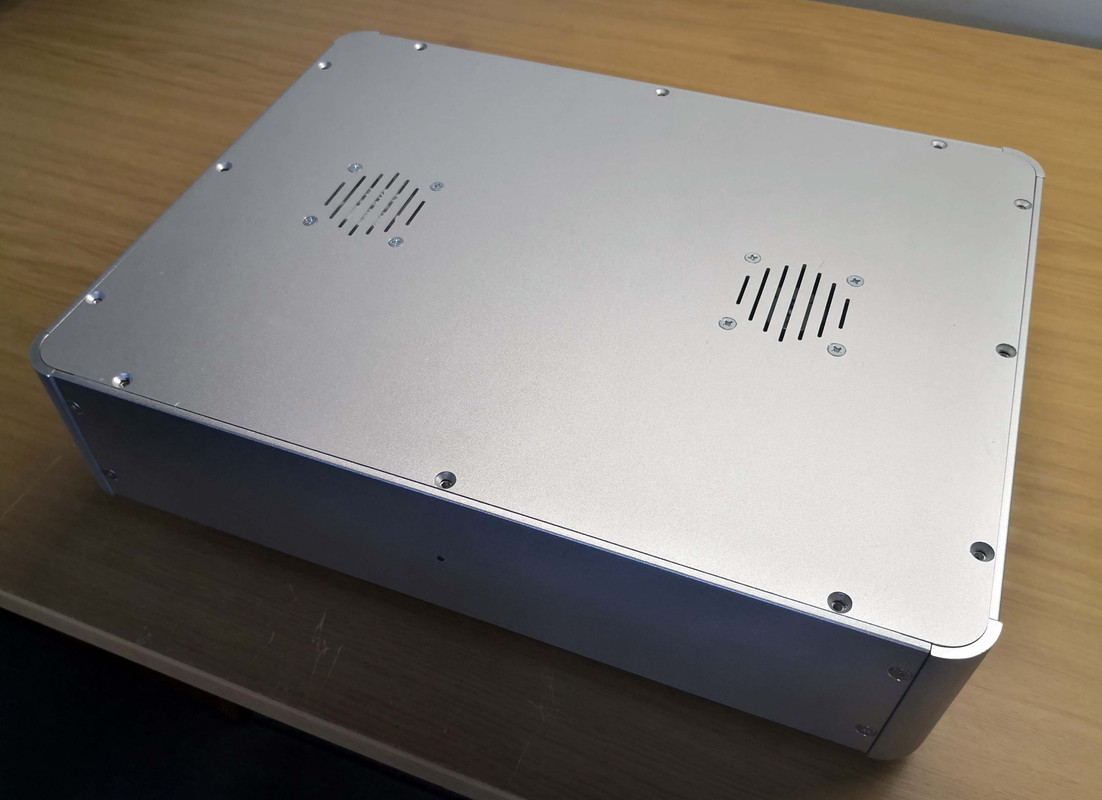
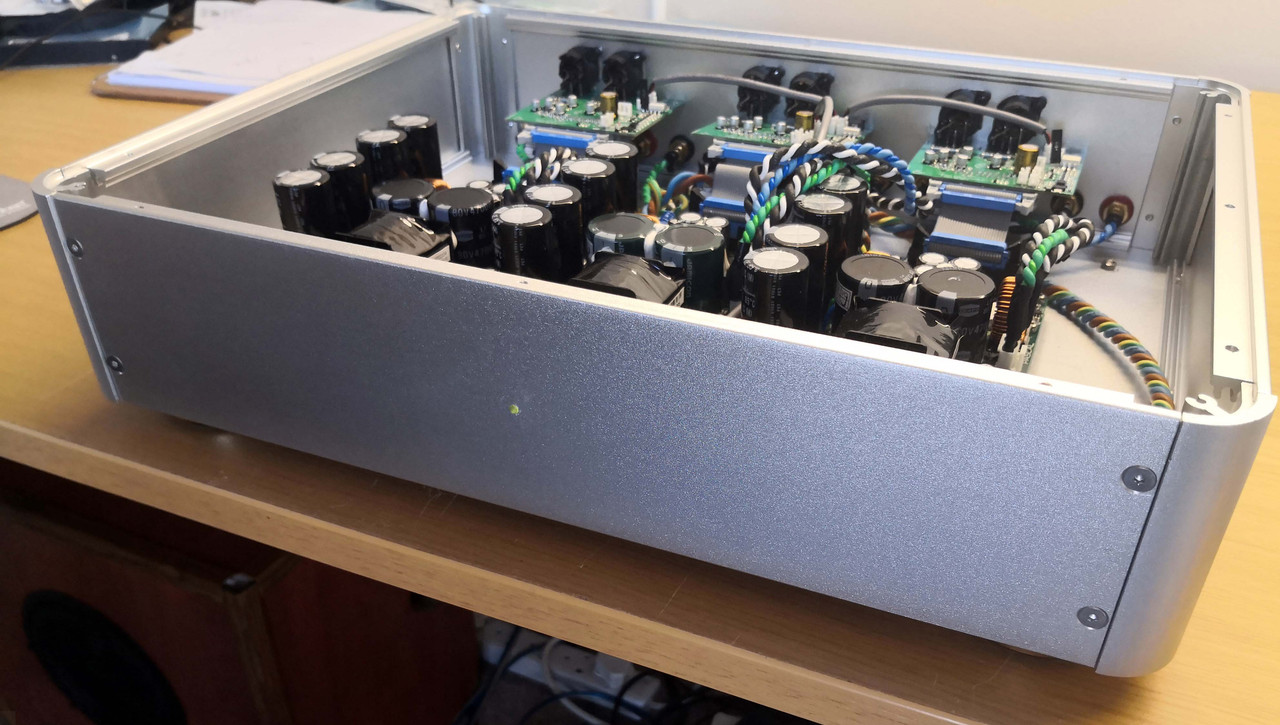
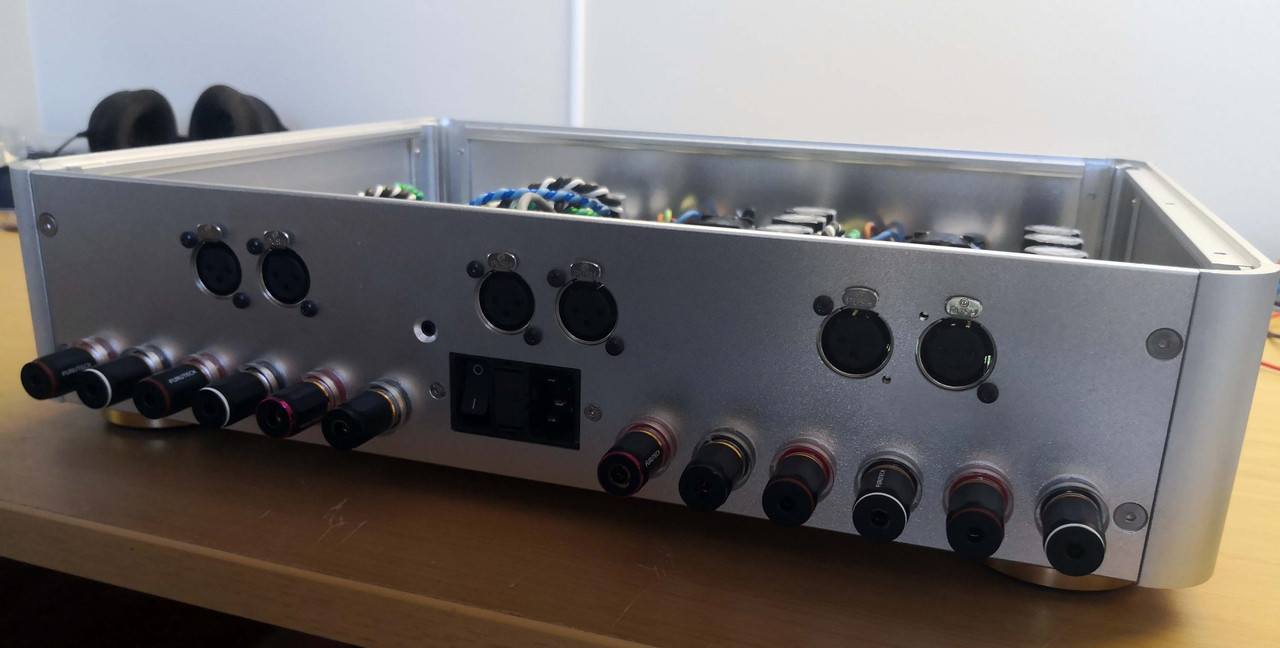
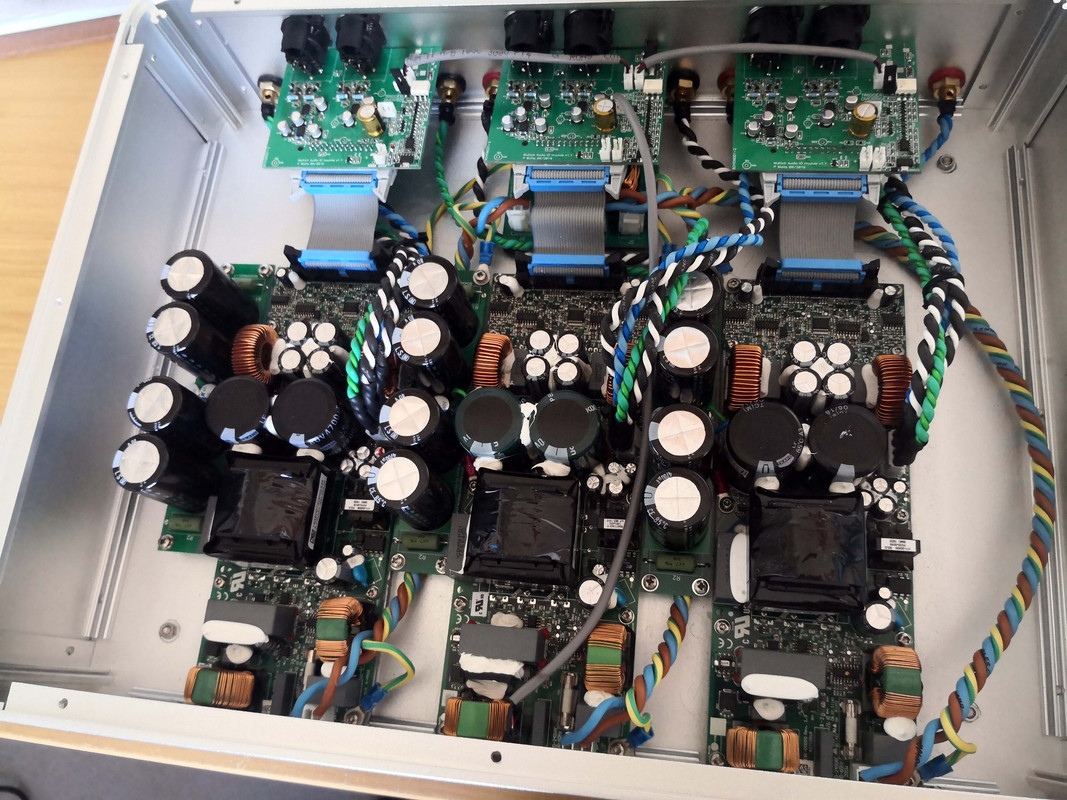
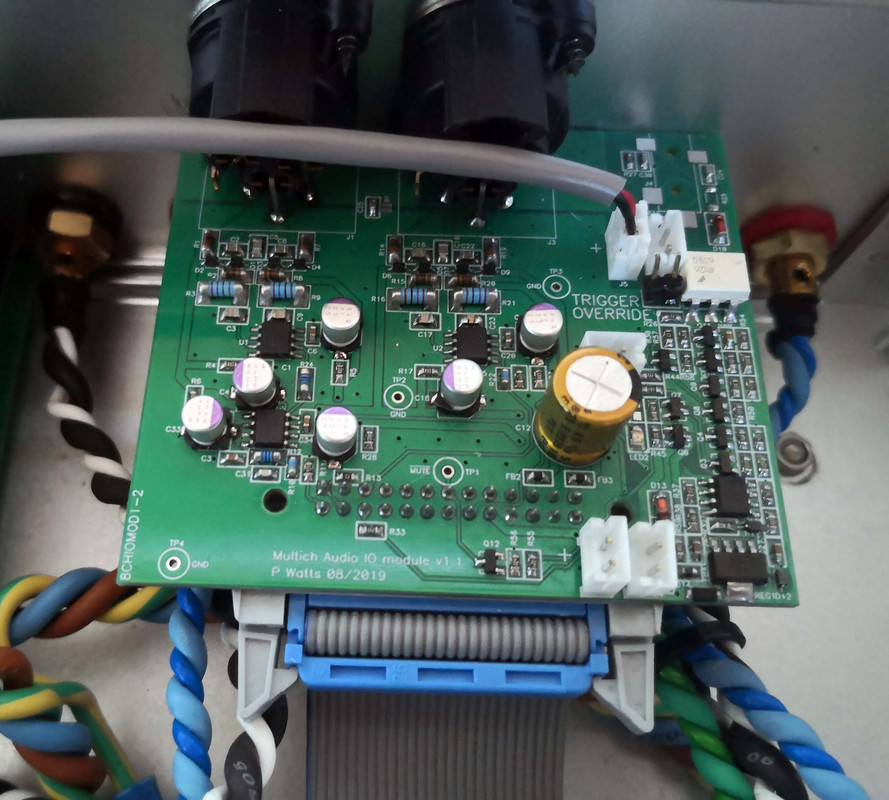
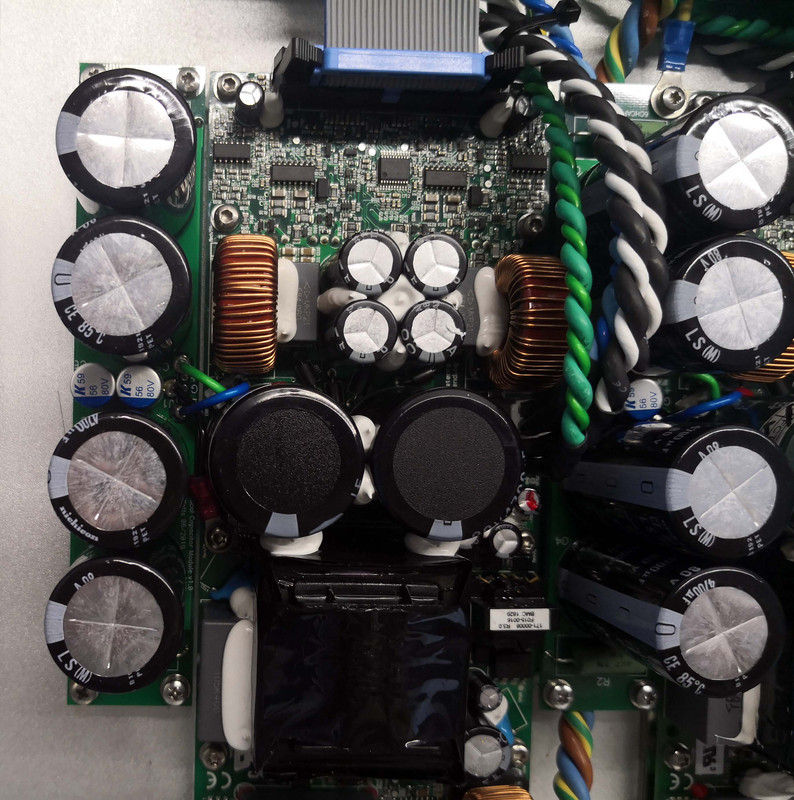
The chassis is a completed blank unit I imported from AliExpress and machined locally. I probably will not go that route again as all together it cost quite a bit more than anticipated.
Not shown below the middle input module is the AC power input consisting of a fuse, 220nF X-cap and massively oversized Siemens MOV, together with an oversized Wuerth CM choke to keep EMI out. This then fans out to the three amp modules.
The audio, auxiliary power and control signals all go over the ribbon connection. This can work fine if the circuit diagram and layout is done very carefully. Also, one should use ribbon cables of high quality and away from the switching stages. This is not a regular hacked-up IDE cable, it is a teflon-insulated silved-coated ribbon. The plugs are 30um gold-plated models from Amphenol.
I used identical modules for the three stereo modules. The grey wires connecting them are for the 12V trigger input that's on the middle module. Each of them are opto-isolated.
Inputs are differential, with only 0.1% metal film MELF resistors and 2% film capacitors in the signal path. Opamps are OPA1611; one channel is inverted to avoid the typical class-D half-bridge bus pumping problem. Opamps are decoupled with a mix of ceramic and OSCON electrolytic. All opamps are singles, with individual RC power filtering.
I kept the amplifier modules mostly unchanged except for a few modifications to the power supplies and substituting input opamp buffers with lower-noise alternatives.
At the left of each amplifier is an auxiliary capacitor bank to assist with sustained LF transients. This is an additional 9400uF per rail, plus 56uF OSCON. Adding anything else like MKP caps would not really help much given the parasitic effects brought by the wire connections, despite being very short and thick, to the amp PSU. The green resistors are bleed resistors for discharge after powerdown.
AC cabling used is extremely thick multistrand from a Swiss company, the speaker cable is teflon-insulated silver-coated copper.
Binding posts are from Furutech and XLR's are Neutrik.
At the front is just a single power LED, nothing more.
Due to the efficiency and low load of centre & surround duties I did not add a heatsink. There is ample over-temperature protection already, but just to be sure I added two fans, one blowing and one sucking, that turns on when any of the three modules reach 60degrees. During testing with normal material as intended they have not turned on yet, and if they do it probably indicates volume should be eased down.
Sound: I'm very pleased. They sound as good as they do in my commercially-used products, with exceptionally little noise. Power usage is low and they stay cool, so it has met all the design criteria. I would be happy using it even for the front channels, but for that I have something very different in the works.
I basically wanted a new 6ch amplifier for centre, rear and side duties comprising of the following:
- does not consume a lot of power
- balanced inputs
- trigger enable
- reliable for time and loadshedding
- cost-effective
My trusty Sunfire Cinema Grand did the part on most of these, except reliability and 12V inputs, plus the itch was there to go DIY.
I am very well familiar with the Pascal amplifiers and they, if correctly used, are capable of astonishing results despite their compact size and having integrated power supplies. Each module is capable of 2x 500WRMS, sustained, so this is basically a 3kW amp. And since each amp has its own PSU, this figure is correct with all channels driven.
Below are the pics of the final product:






The chassis is a completed blank unit I imported from AliExpress and machined locally. I probably will not go that route again as all together it cost quite a bit more than anticipated.
Not shown below the middle input module is the AC power input consisting of a fuse, 220nF X-cap and massively oversized Siemens MOV, together with an oversized Wuerth CM choke to keep EMI out. This then fans out to the three amp modules.
The audio, auxiliary power and control signals all go over the ribbon connection. This can work fine if the circuit diagram and layout is done very carefully. Also, one should use ribbon cables of high quality and away from the switching stages. This is not a regular hacked-up IDE cable, it is a teflon-insulated silved-coated ribbon. The plugs are 30um gold-plated models from Amphenol.
I used identical modules for the three stereo modules. The grey wires connecting them are for the 12V trigger input that's on the middle module. Each of them are opto-isolated.
Inputs are differential, with only 0.1% metal film MELF resistors and 2% film capacitors in the signal path. Opamps are OPA1611; one channel is inverted to avoid the typical class-D half-bridge bus pumping problem. Opamps are decoupled with a mix of ceramic and OSCON electrolytic. All opamps are singles, with individual RC power filtering.
I kept the amplifier modules mostly unchanged except for a few modifications to the power supplies and substituting input opamp buffers with lower-noise alternatives.
At the left of each amplifier is an auxiliary capacitor bank to assist with sustained LF transients. This is an additional 9400uF per rail, plus 56uF OSCON. Adding anything else like MKP caps would not really help much given the parasitic effects brought by the wire connections, despite being very short and thick, to the amp PSU. The green resistors are bleed resistors for discharge after powerdown.
AC cabling used is extremely thick multistrand from a Swiss company, the speaker cable is teflon-insulated silver-coated copper.
Binding posts are from Furutech and XLR's are Neutrik.
At the front is just a single power LED, nothing more.
Due to the efficiency and low load of centre & surround duties I did not add a heatsink. There is ample over-temperature protection already, but just to be sure I added two fans, one blowing and one sucking, that turns on when any of the three modules reach 60degrees. During testing with normal material as intended they have not turned on yet, and if they do it probably indicates volume should be eased down.
Sound: I'm very pleased. They sound as good as they do in my commercially-used products, with exceptionally little noise. Power usage is low and they stay cool, so it has met all the design criteria. I would be happy using it even for the front channels, but for that I have something very different in the works.
